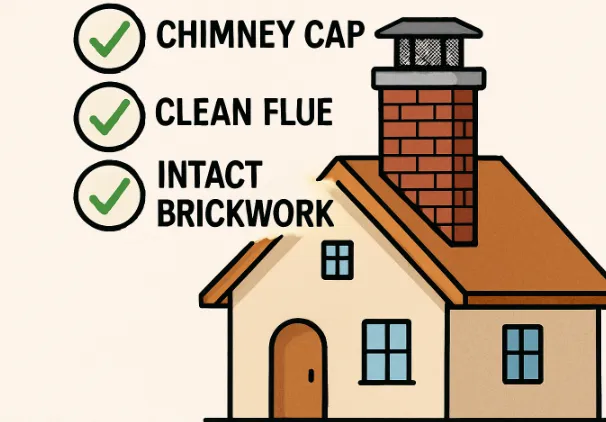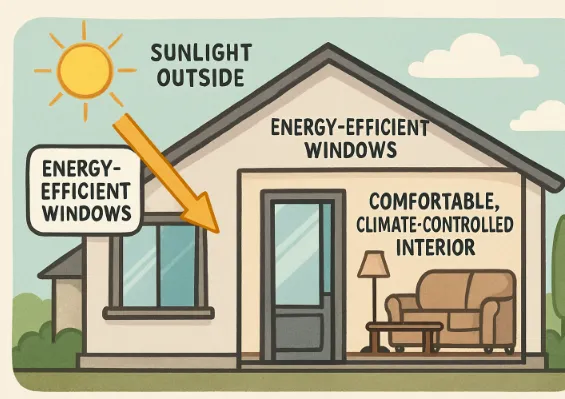Preventing Common Chimney Problems Before They Start
Chimney maintenance is a crucial responsibility for homeowners who use a fireplace or wood stove. While a well-maintained chimney promotes warmth and comfort, neglect can lead to serious safety hazards, costly repairs, and even house fires. Scheduling routine upkeep and inspections ensures your home remains safe and your heating system operates efficiently. To help you get started, here’s a guide to proactive chimney care and how you can avoid the most common problems before they arise. For professional repairs and specialized services, you can rely on experts at https://southernchimneys.com/chimney-repair/ for guidance and exceptional workmanship. Proper chimney maintenance is crucial for safety, home value, and safety. Regular checkups and preventive habits can extend the chimney’s lifespan, optimize heating efficiency, and prevent costly issues, ensuring a long-lasting, comfortable fireplace.
Also Read: Efficient Travel Organization with Smart Packing and Storage Solutions
Regular Inspections: The First Line of Defense
Having your chimney inspected annually by a qualified professional is the most effective way to identify hidden dangers early. According to the Chimney Safety Institute of America (CSIA), even unused or rarely used chimneys should be checked for cracks, blockages, and wear. Professionals are trained to spot hazards such as creosote buildup, loose masonry, missing flashing, or blockages that might escape the notice of an untrained eye. Early detection enables timely repairs—a small investment compared to the high cost of restoring a damaged system or dealing with a house fire.
Creosote Buildup: A Hidden Hazard
Creosote is a tar-like substance created when wood is burned incompletely. It accumulates inside flues over time, especially if the fires burn with restricted airflow or use unseasoned wood. The danger lies in its high flammability; creosote chokepoints are often where chimney fires begin. The National Fire Protection Association (NFPA) recommends annual chimney sweepings to remove dangerous creosote and ensure all passageways are clear. Besides fire risks, heavy creosote buildup can hinder ventilation, affecting indoor air quality and fireplace efficiency. For an in-depth review of chimney fire risks and prevention, visit Family Handyman.
Safe Burning Practices
Type of Wood: Rely on seasoned hardwoods like oak or maple, dried for at least six to twelve months. These woods produce more heat, burn cleaner, and create minimal creosote, while green or soft woods produce excessive smoke and sticky residues.
What to Avoid: Never burn trash, painted or pressure-treated wood, or glossy papers. These materials can release toxic chemicals, foul odors, and increase creosote and soot deposits. Only dry, untreated wood should be used indoors to ensure efficient and clean combustion.
Fire Size: Keep fires moderate to prevent overtaxing the flue. Overloading the firebox can cause excessive heat, damaging liners and permitting unburnt particles to settle inside the chimney.
Also Read: TRDWD Classic Site: A Secure and Cost-Effective Trading Platform
Chimney Caps: Small Investment, Big Protection
A chimney without a cap is an open invitation for trouble—birds, squirrels, and debris can easily enter, causing dangerous blockages or even nesting that blocks airflow. Rainwater is another frequent invader, leading to moisture damage, rust, and deterioration. Installing a quality chimney cap with mesh sides creates a barrier that allows smoke and gases to escape freely while still protecting the chimney. It’s a modest expense that can prevent animal entry, costly waterproofing repairs, and frequent cleanings due to leaf and debris buildup.
Addressing Cracks and Structural Issues
Temperature fluctuations, moisture exposure, and natural settling can all contribute to cracks in the flue liner or exterior brickwork. Early-stage cracks are considered maintenance-level repairs; however, left unchecked, they can expand and allow water or gases to enter. Water infiltration leads to further freeze-thaw cycles, spalling bricks, and potential collapses. Regular monitoring—especially after storms or freezing winters—can keep repair costs down. If hairline cracks appear, act early to seal or repoint as needed rather than deferring and risking larger issues later.
Waterproofing: Shielding Against the Elements
Chimneys sit exposed, making them vulnerable to rain, ice, and snow. Over time, unchecked moisture can compromise the mortar, lead to efflorescence (white salt deposits), and freeze/thaw cycles that weaken the entire structure. To combat this, apply a chimney-specific waterproof sealant and inspect the chimney crown for any signs of integrity issues. Proper waterproofing shields your chimney from the elements and avoids the need for major masonry reconstructions due to ongoing water penetration.
When to Call the Professionals
DIY maintenance—for example, removing loose debris or inspecting for apparent blockages—can be effective, but complex problems require the expertise of a certified chimney sweep or mason. If you notice persistent odors, visible damage, excessive smoke backing into the home, or wildlife activity, seek professional help. Experts carry specialized tools, such as rotary brushes, cameras, and vacuums, that diagnose and resolve issues efficiently and safely—protecting both your family’s health and your investment in the property.
Conclusion
Preventing common chimney problems begins with routine maintenance, proper burning practices, and prompt repairs. Annual inspections, proper waterproofing, capped chimneys, and a commitment to safe firewood handling will extend the life of your fireplace system, safeguard your home, and prevent costly emergencies. A proactive approach isn’t just a matter of convenience; it’s an essential part of responsible homeownership and peace of mind.







